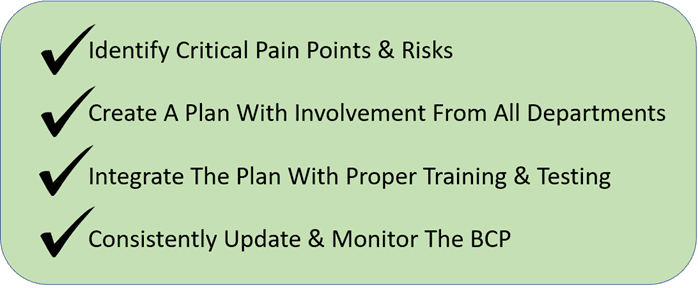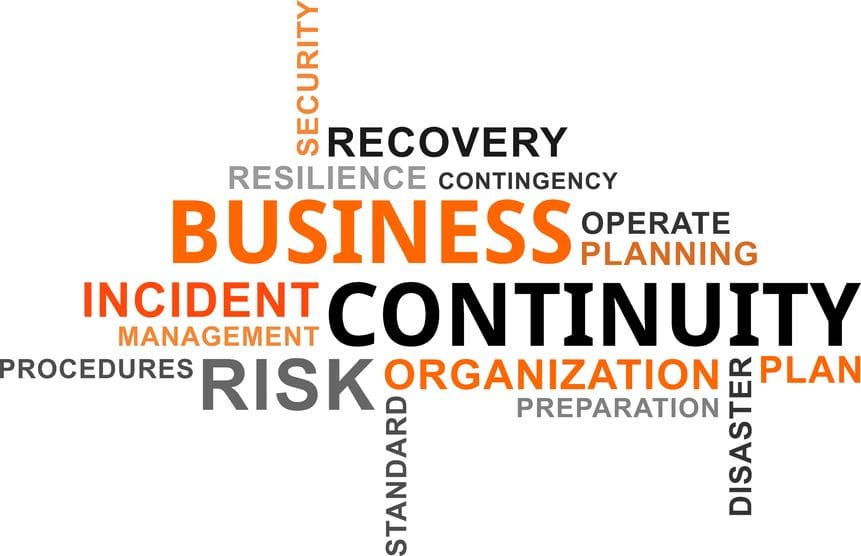Find out why developing and continually maintaining a business continuity plan can help energy companies better prepare for unexpected disturbances.
Whether it be natural disasters, cybersecurity attacks, or global pandemics, workplace disturbances occur frequently and when companies least expect them. Disaster preparedness and business continuity plans (BCPs) have never held more importance, especially with the events this past year has offered. A wide variety of hazards can occur in the workplace, the most prevalent of which are natural disasters, human-caused, health, and technology-related disruptions. Therefore, companies should be continually monitoring their continuity plans and understand where their risks lie in the case of an unexpected event to better avoid, reduce, and mitigate the impact and loss.
Value Of Business Continuity Plans
BCPs are valuable because they focus on proactively planning, developing, testing, and implementing processes and procedures that aim to maintain business operations in the event of a disruption. BCPs define timely and controlled methods to prevent and recover from losses resulting from potential threats such as natural disasters or cyberattacks. It’s important that companies place value in constantly monitoring and updating their BCP so when interruptions do occur, a company can handle them in a rapid, cost-effective, and consistent manner.
The energy industry is particularly vulnerable to unanticipated events. For example, the cold snap that descended on Texas in February reduced crude oil production by more than 1 MMbbl/d. Natural disasters such as Hurricane Harvey in 2017 impacted more than 336,000 customers due to outages reported by leading utility companies.
Natural disasters shouldn’t be the only hazard companies prepare for. Recent health and technology-related continuity scenarios created prolonged issues as well. The COVID-19 pandemic has caused unpredictable trends in demand for oil, as well as fluctuating price indexes, and the recent cyberattack on Colonial Pipeline halted operations sending shockwaves across the entire energy supply chain from the U.S. Gulf Coast to the Northeast.
Incidents like these can have lasting impacts if the disaster isn’t handled in a timely and orderly way. That’s why having an established BCP can help save companies time and money while also preserving brand reputation and customer satisfaction.
The following are four helpful tips when creating an effective BCP:

- Identify Critical Pain Points & Risks
A good first step when creating a BCP is to identify areas within your company that are most at risk if a major unforeseen circumstance were to occur tomorrow. If the company has an existing enterprise risk management system, this would be a good place to look for data when identifying risks. Conducting surveys is also a great way to gain information and insight on where employees believe weaknesses lie within the company. Understanding where these critical pain points lie, the impact it would have on certain processes and personnel if they were interrupted, and total impact it would have such as loss of time, money, and data are important factors to consider when building your BCP.
When a disaster occurs, the organization isn’t going to be able to run business as normal. Organizations need to prioritize critical functions such as protecting the revenue cycle, supply chain efficiencies, external financial reporting, and month-end close. Calculating these risks and prioritizing areas that would affect the company most is the best place to start when deciding how to approach your recovery strategies.
- Create A Plan With Involvement From All Departments
To create a successful BCP, it’s recommended that leads from each department of the company come together to collaborate on the continuity plan. Each department lead should highlight areas they believe are at most risk within their specific business unit and communicate these to the group. Having a space to explain their own risks and how they could affect other parts of the company will create an awareness of where crucial dependencies exist within your organization. For example, the accounts payable and finance team will benefit most from the BCP if they create the plan together. By working together, both teams understand their critical processes, how they are interdependent, and the approach they will take in the event of a disturbance. Encouraging collaboration and communication between departments when building a BCP will create a sense of teamwork, interdependence, and strengthen the overall continuity plan.
- Integrate The Plan With Proper Training & Testing
Once the plan is created, it’s important that all employees are made aware of the BCP and what their duties would be in the event of an unforeseen disruption. The plan should be simple and clear for the ease of employee understanding. During a disaster, business operations aren’t running normally so if the continuity plan is overly complex, it will ultimately add to an already chaotic situation. Integrating the plan requires proper training at all levels of an organization. The goal is to have collective understanding and preparedness of specific actions to take during an unexpected event.
Training should occur as part of the onboarding process after creating the continuity plan and should be reviewed at least once a year by all employees. Along with proper training, employees should have easy access and know where to find BCP documents when required. Keeping physical and electronic copies within each department allows team members to quickly review roles, responsibilities, and tasks in case the main server is down.
Testing is also an important step when creating a sustainable continuity plan. Initial and periodic testing should be performed based on specific needs of the business. Testing the continuity plan helps validate the effectiveness of the BCP and identifying problem areas within the organization in the event a disruption occurs. Rehearsals, table-top exercises, and simulations further create valuable opportunities for cross-functional teams to step through the plan together, practice processes, and reinforce communication channels.
- Consistently Update & Monitor The BCP
Companies should be consistently monitoring the business and operating environment looking for changes that necessitate an update to the BCP. Beyond yearly updates, other events such as the implementation of a new enterprise resource planning (ERP) or energy trading risk management (ETRM) system or a reorganization of one or more departments are good examples of triggers for when companies should update the BCP. Consistently checking in with identified department leads and understanding emerging risks across the organization will help proactively maintain the health of the continuity plan.
For example, a leading utility company that Opportune has advised specifically for business continuity has seen positive results from putting a strategic plan in place. A tactic Opportune has advised clients on is the creation of a “Business Continuity Board”. Dedicating specific leaders within the company to be held responsible for maintaining and continually updating the continuity plan will ensure the BCP is being looked after and thought about from all aspects of the business.
Summary
Business continuity and disaster planning has never been more important. With continuous economic, social, and environmental changes, it’s important that businesses expect the unexpected and have an established continuity plan for when disturbances eventually occur. Having a methodical and sustainable plan, ensuring proper training throughout the organization, and seeking advisory help are all crucial to surviving and thriving business operations in an uncontrollable environment.
Katie Albers is a Consultant in Opportune LLP’s Process & Technology group based in Houston. Prior to joining Opportune during her collegiate studies, Katie gained experience in international brand relations and business marketing while serving as a Digital Product Intern at Hilton International in Dallas and an International Marketing Intern at Vestri in Florence, Italy. Katie graduated from the University of Oklahoma with a B.S. in Supply Chain Management and a minor in Marketing.






